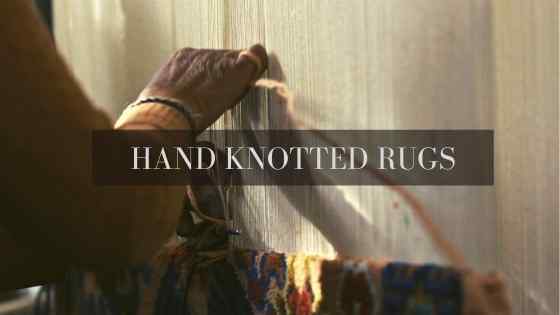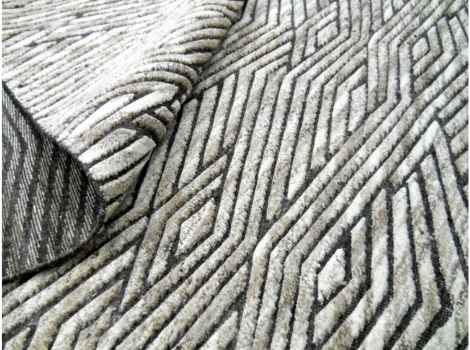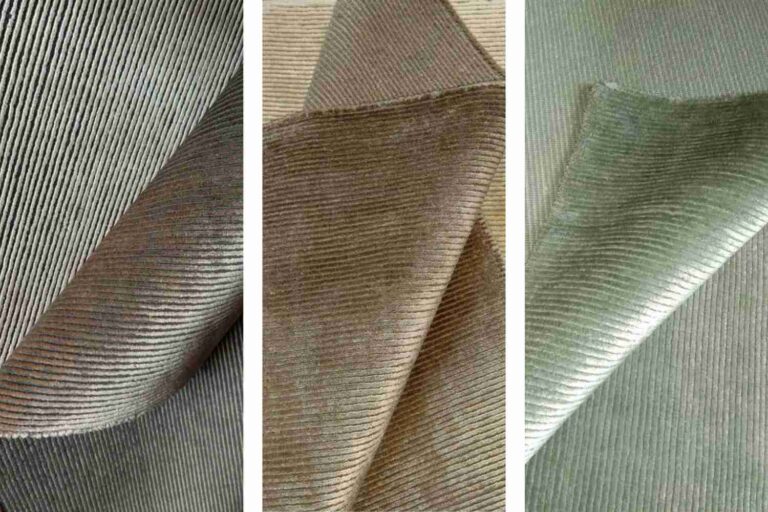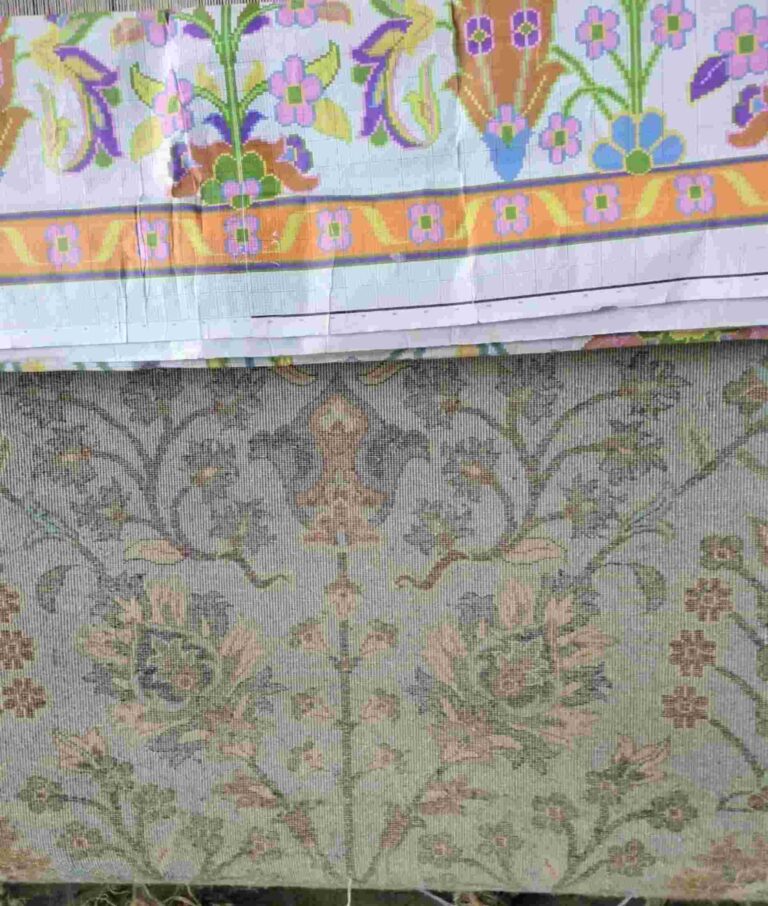
Table of Contents
HAND KNOTTED RUGS FROM INDIA
Hand Knotted Rugs From India
Hand knotted rugs are made by precisely tying several knots in a carpet.
Traditionally, the knotted rugs are made on a designed loom. Vertical cotton threads are tied onto the loom which becomes the fringe of the carpet.
Hand Woven Rugs vs Hand knotted
There is a difference between a hand woven and the hand knotted. Every knotted carpet is handmade, but not every handmade rug is a knotted area rug. The hand made rugs include braiding, tufting, and hooking, etc. From all of them, hand knotting and braiding are the most common.
Hand knotted Rugs are the ‘Crème de la crème’ of the carpet world. It is a premium collection of rugs created by intricately woven fibers of the most exceptional quality wool & silk.
Thousands of knots tied one over the other by our experienced weavers to create brilliant designs. Hand knotted area rugs are an investment that turns into precious heirlooms with time.

Hand Knotted Carpets-Bhadohi
Among types of Indian rugs, hand knotting is noted to be the oldest technique of carpet weaving in India and is still used to make carpets. It requires artisan’s skills and time to produce a high-quality rug.
The knot density can indicate the quality of the carpet. You can tell the quality of these carpets by reading the number of knots in each square inches from the backside of the rug. Note, more the number of knots/sq in., the superior would be the quality of the rug. A rug may have 25-1000 KPSI.
A skillful weaver can tie a knot in only 3 seconds, which means that a rug weaver ties nearly 6000 knots in a day with comfort.
Hand-knotted carpets are considered to be the best among all other types of piles loop carpets and can last up to 20 years or more. Persian, Turkish and Tibetan knots are the most popular techniques used in the Varanasi-Bhadohi-Mirzapur belt.
Types Of Hand Knotted Rugs
Persian weave: The real Persian rugs come from where they originated, Iran. These knotted rugs are also made in many southeastern Asian countries and are best known as Oriental area rugs. Click to learn more about Persian hand knotted rugs.

Nepali weave: Nepali rugs made in India are also known as Indo-Tibetan rugs or Indo-Nepali rugs. These rugs follow different weaving patterns using a steel rod called ‘sariya’. Learn more about Indo-Tibetan rugs.

Turkish Weave: Hand knotted Turkish rugs are known for their different method of tying the knot around the cotton string.
Hand Knotted Rug Production Process
Hand knotted rugs from India follow a lengthy process too.
Dying the yarn
The wool goes to the dying plant where a dyeing specialist colors the selected wool to its required color.
Mapping
The given design from the customer goes for rendering. There are two methods of rendering the design—first, the traditional way, and secondly, by use of computer software to prepare the CAD.
Weaving
Next, skilled artisans weave the rugs by following the rug’s map provided to them by the rug manufacturer.
Washing
Once the rug weaving is complete, it goes out to the washing plant for professional washing. Here the rug’s back is smoothened by slightly burning any unnecessary hair and cotton from the backside of the carpet.
Stretching
It is natural for every handmade rug to have uneven edges or size issues. In this process, all four sides of the carpet get nailed on the ground to correct any misshapes.
Clipping
After binding the rug sides, clipping the rug is the final process where the carpet is trimmed or sheared. It is under this very process where the carpet gets its desired pile height.
Finishing
There is a thorough inspection of the hand knotted carpet, and treated with all necessary touch-ups. It is then rolled and packed to ship it to its final destination.

What Are Hand Knotted Rugs Made
The hand-knotted oriental rugs are most of the time made in exclusive wool and silk materials. They are considered the most unique, durable, and expensive rugs types.
WOOL
The primary and most authentic type of material used in rug making is the wool. Hand knotted wool rugs are the original rug type. NewZealand wool rug is known to be the best of all wool types.
Here are some of the top benefits of wool rugs and why you must buy them.
SILK
Pure silk fiber rugs are expensive and a good investment. Silk and wool blend rugs have ample market space in the world of carpets.
Bamboo silk rugs, soft natural material is another natural fiber that is widely in use for developing handknotted rugs.
Viscose fiber is also the most used material these days in the handmade rugs. Viscose rugs are soft and give a velvety look. They are cheaper and the closest alternative to pure silk rugs.
Knots Determine Knotted Rugs Quality
It is easy to identify the quality of knotted carpets. All to know about measuring these rug’s quality is to know about its KPSI. KPSI means Knots Per Square Inch of the area rug.
In simple words, more knots per square inch mean high rug quality and less KPSI means lower the quality of the rug. The number of knots alone is one factor that tells every knotted area rug’s quality. The other elements are the quality of the fiber, wash, dying, etc.
The table below can tell more about the grades of quality rugs:
| No. of knots/KPSI | Quality Grade |
|---|---|
| 80 or fewer | Low quality carpet |
| 123 to 330 | Medium to good quality carpet |
| 330 or more | High quality carpet |
Why Hand Knotted Area Rugs?
First of all, hand knotted rugs from India or elsewhere are all human hand made. Hand made rugs in India are woven by both men and women. Varieties of yarns are used to create these rugs in all different colors, sizes, and designs possible.
Learn about why Oriental rugs are so expensive.
Pros Of Hand Knotted Area Rug
- These are traditional forms of area rug making. Every carpet is precious as the value of them grows as they get older.
- Knotted rugs are perfect for high foot traffic areas.
- The knots created to the foundation of the carpet makes them more reliable and durable.
- The durability of these handmade rugs is much higher compared to the tufts.
Cons Of Hand-knotted Area Rug
- Expensive: The hands ultimately make the hand-knotted area rugs. Hence, the production takes time leading to a higher cost of production. The length of time taken to weave them is one of the main factors that turn them into the most expensive types of rugs.
- Professional Cleaning: Hand knotted carpets are expensive and exceptional rugs. They need expert cleaning, which is costly and also a bit costly to maintain its speciality.
Do Hand knotted Rugs Shed?
Do not panic if you find your newly bought rug sheds. The fact is that every hand-tied rug irrespective to what the quality is, do shed somewhat.
The shedding, however, is an entirely normal thing in newly knotted carpets.
In hand-tufted rugs, there is significantly more shedding due to its latex backing. Knotted area rugs comparatively shed less as the fiber is tied around its cotton thread foundation.
The shedding, however, slows down and lessens with time as the rug gets older.
